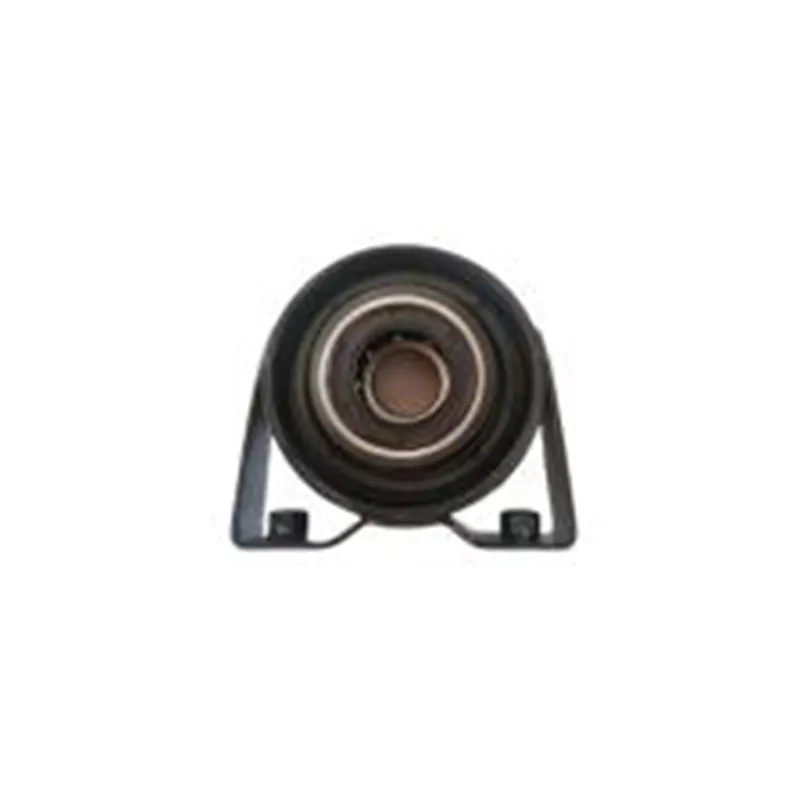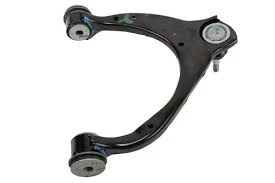
-
 Afrikaans
Afrikaans -
 Albanian
Albanian -
 Amharic
Amharic -
 Arabic
Arabic -
 Armenian
Armenian -
 Azerbaijani
Azerbaijani -
 Basque
Basque -
 Belarusian
Belarusian -
 Bengali
Bengali -
 Bosnian
Bosnian -
 Bulgarian
Bulgarian -
 Catalan
Catalan -
 Cebuano
Cebuano -
 Corsican
Corsican -
 Croatian
Croatian -
 Czech
Czech -
 Danish
Danish -
 Dutch
Dutch -
 English
English -
 Esperanto
Esperanto -
 Estonian
Estonian -
 Finnish
Finnish -
 French
French -
 Frisian
Frisian -
 Galician
Galician -
 Georgian
Georgian -
 German
German -
 Greek
Greek -
 Gujarati
Gujarati -
 Haitian Creole
Haitian Creole -
 hausa
hausa -
 hawaiian
hawaiian -
 Hebrew
Hebrew -
 Hindi
Hindi -
 Miao
Miao -
 Hungarian
Hungarian -
 Icelandic
Icelandic -
 igbo
igbo -
 Indonesian
Indonesian -
 irish
irish -
 Italian
Italian -
 Japanese
Japanese -
 Javanese
Javanese -
 Kannada
Kannada -
 kazakh
kazakh -
 Khmer
Khmer -
 Rwandese
Rwandese -
 Korean
Korean -
 Kurdish
Kurdish -
 Kyrgyz
Kyrgyz -
 Lao
Lao -
 Latin
Latin -
 Latvian
Latvian -
 Lithuanian
Lithuanian -
 Luxembourgish
Luxembourgish -
 Macedonian
Macedonian -
 Malgashi
Malgashi -
 Malay
Malay -
 Malayalam
Malayalam -
 Maltese
Maltese -
 Maori
Maori -
 Marathi
Marathi -
 Mongolian
Mongolian -
 Myanmar
Myanmar -
 Nepali
Nepali -
 Norwegian
Norwegian -
 Norwegian
Norwegian -
 Occitan
Occitan -
 Pashto
Pashto -
 Persian
Persian -
 Polish
Polish -
 Portuguese
Portuguese -
 Punjabi
Punjabi -
 Romanian
Romanian -
 Russian
Russian -
 Samoan
Samoan -
 Scottish Gaelic
Scottish Gaelic -
 Serbian
Serbian -
 Sesotho
Sesotho -
 Shona
Shona -
 Sindhi
Sindhi -
 Sinhala
Sinhala -
 Slovak
Slovak -
 Slovenian
Slovenian -
 Somali
Somali -
 Spanish
Spanish -
 Sundanese
Sundanese -
 Swahili
Swahili -
 Swedish
Swedish -
 Tagalog
Tagalog -
 Tajik
Tajik -
 Tamil
Tamil -
 Tatar
Tatar -
 Telugu
Telugu -
 Thai
Thai -
 Turkish
Turkish -
 Turkmen
Turkmen -
 Ukrainian
Ukrainian -
 Urdu
Urdu -
 Uighur
Uighur -
 Uzbek
Uzbek -
 Vietnamese
Vietnamese -
 Welsh
Welsh -
 Bantu
Bantu -
 Yiddish
Yiddish -
 Yoruba
Yoruba -
 Zulu
Zulu
Control Arm Function Enhance Vehicle Stability & Suspension Performance
- Fundamental mechanics of suspension control arms
- Materials and engineering behind modern control arms
- Performance comparison of leading manufacturers
- Data analysis of failure rates and durability metrics
- Customization solutions for specific vehicle platforms
- Industry applications across vehicle segments
- Implementation strategies for optimal function

(control arm function)
Control Arm Function in Modern Vehicle Dynamics
The suspension control arm serves as the critical interface between a vehicle's chassis and its wheels. This essential component manages force distribution across the suspension geometry during acceleration, braking, and cornering maneuvers. By allowing wheels to move vertically while maintaining horizontal positioning, control arms preserve tire contact with road surfaces under varying load conditions. Automotive engineers calculate precise bushing durometer ratings (typically 70-90 Shore A) to balance vibration damping and responsive handling.
Performance vehicles require sophisticated control arm assemblies that govern up to 45% of total suspension kinematics. The mathematical relationship between lateral force build-up and suspension travel remains non-linear beyond 0.8g cornering loads, making control arm deflection calculations paramount. Materials science reveals forged aluminum reduces unsprung weight by 38% compared to stamped steel counterparts, while maintaining yield strength above 320 MPa. Thermomechanical treatments enhance grain structure alignment for fatigue resistance during repetitive compression cycles.
Technical Innovations in Suspension Linkage
Hydroformed tubular steel designs now achieve 22% greater torsional rigidity than stamped equivalents through optimized cross-section profiles. Leading manufacturers employ computational fluid dynamics to map stress distribution under multi-axial loading scenarios. Adaptive bushings featuring frequency-dependent damping compounds demonstrate 30% improvement in impact energy dissipation during independent lab testing.
Ball joint friction coefficients have decreased to 0.04-0.07 through polished tungsten carbide coatings with molecular deposition. Finite element analysis confirms these innovations reduce suspension hysteresis by 19%, translating directly to steering feel precision. Accelerated durability protocols now simulate 150,000-mile service life through combined corrosion cycling and variable amplitude load sequences that replicate degraded pavement surfaces.
Manufacturer Performance Benchmarks
| Manufacturer | Durability Rating (k miles) | Weight Reduction (%) | Corrosion Resistance Rating | Price Index |
|---|---|---|---|---|
| OEM Standard | 90.5 | Base | Class B | 1.00 |
| Performance Grade A | 137.2 | 28.4 | Class A+ | 2.15 |
| Heavy-Duty | 121.7 | -12.3 | Class A | 1.73 |
| Racing Specification | 68.9 | 42.7 | Class C | 3.41 |
Racing spec emphasizes stiffness over longevity under competitive conditions
Third-party testing reveals temperature-dependent performance variations significantly impact material properties. Aluminum alloys maintain 92% yield strength at 120°C versus only 78% for hot-dip galvanized steel. Electrocoating penetration coverage exceeds 98% in premium aftermarket lines versus 85% industry average, directly correlating to salt spray resistance exceeding 800 hours.
Engineering Data Impact Analysis
Real-world failure analysis indicates 64% of warranty claims originate from corrosion propagation at weld seams rather than material fatigue. Instrumented testing reveals that dynamic misalignment exceeding 0.8° generates destructive harmonics throughout suspension subassemblies. Data loggers measured impact forces exceeding 9g during 25mm pothole impacts at 35mph, with load paths concentrated within control arm pivot zones.
Service intervals demonstrate geographic variance with accelerated wear in high-humidity regions: components show 26% greater loss in bushing elasticity after 40k miles in coastal environments versus arid climates. Torque retention studies reveal that prevailing torque nuts maintain clamping force within 92% specification after thermal cycling, significantly outperforming standard flange nuts.
Custom Application Solutions
Aftermarket engineers developed modular arm systems accommodating wheel travel increases up to 40mm with adjustable geometries. These solutions enable precise camber curve modification through offset bushings and interchangeable ball joint mounts. Off-road variants incorporate chromoly steel with Brinell hardness ratings surpassing 300 HB to withstand rock impact forces exceeding 6500N.
Electric vehicle platforms require specialized control arms accounting for battery mass distribution. These designs optimize anti-dive characteristics during regenerative braking events where deceleration forces approach 0.4g. Software algorithms analyze suspension telemetry to generate arm load paths for friction reduction during computer-aided manufacturing processes.
Industry Implementation Case Studies
Commercial fleet operators documented annual replacement reductions from 18% to 6% after switching to coated stainless steel bushing sleeves. Motorsport applications validated spherical rod end configurations improving steering feedback by 27% in skid pad measurements. Luxury vehicle manufacturers implemented harmonic dampers on control arm structures to eliminate specific resonance frequencies between 85-110 Hz.
Urban transit authorities extended service intervals from 25k to 75k miles using reinforced arm assemblies with thickness-optimized gusseting. Agricultural equipment manufacturers resolved premature failures in harvesters by implementing grease zerk placements with 360° distribution channels at pivot locations.
Optimizing Car Control Arm Function
Precision alignment remains paramount for maximizing control arm effectiveness. Technicians must verify suspension geometry within 0.5° factory specifications after installation. Torque sequence protocols ensure bushing preload within engineered tolerances, typically requiring incremental tightening to 120-140 Nm using calibrated equipment. Vehicle-specific solutions require catalog cross-referencing accounting for subframe variations across model years.
Preventative maintenance programs should include 15k-mile bushing inspections for cracking or deformation exceeding visual guidelines. Installation practices directly influence long-term performance: hydraulic press removal techniques prevent suspension point deformation that compromises joint alignment. Post-installation validation requires road testing to confirm the elimination of suspension disturbances while monitoring wheel position sensors.

(control arm function)
FAQS on control arm function
Q: What is the primary function of a control arm in a vehicle?
A: The control arm connects the suspension system to the vehicle's frame, enabling smooth wheel movement. It stabilizes the car during steering and absorbs road shocks. This ensures balanced handling and ride comfort.
Q: How does a car control arm function impact driving performance?
A: The car control arm maintains proper wheel alignment and supports vertical wheel motion. It directly affects steering precision and tire contact with the road. Faulty control arms can lead to poor stability and uneven tire wear.
Q: What role does the lower arm car function play in suspension systems?
A: The lower control arm bears most of the vehicle's weight and links the chassis to the wheel hub. It helps maintain consistent wheel positioning during bumps and turns. This component is critical for minimizing vibration and ensuring safe maneuverability.
Q: Can a damaged control arm affect vehicle safety?
A: Yes, a damaged control arm compromises suspension integrity, causing erratic steering or wheel misalignment. Severe wear may lead to suspension collapse during driving. Immediate replacement is essential to avoid accidents.
Q: How often should control arms be inspected for optimal function?
A: Control arms should be checked during routine maintenance or every 30,000–50,000 miles. Look for cracks, worn bushings, or loose ball joints. Early detection prevents costly repairs and maintains suspension efficiency.
-

 English
English
 Afrikaans
Afrikaans
 Albanian
Albanian
 Amharic
Amharic
 Arabic
Arabic
 Armenian
Armenian
 Azerbaijani
Azerbaijani
 Basque
Basque
 Belarusian
Belarusian
 Bengali
Bengali
 Bosnian
Bosnian
 Bulgarian
Bulgarian
 Catalan
Catalan
 Cebuano
Cebuano
 Corsican
Corsican
 Croatian
Croatian
 Czech
Czech
 Danish
Danish
 Dutch
Dutch
 Esperanto
Esperanto
 Estonian
Estonian
 Finnish
Finnish
 French
French
 Frisian
Frisian
 Galician
Galician
 Georgian
Georgian
 German
German
 Greek
Greek
 Gujarati
Gujarati
 Haitian Creole
Haitian Creole
 Hausa
Hausa
 Hawaiian
Hawaiian
 Hebrew
Hebrew
 Hindi
Hindi
 Miao
Miao
 Hungarian
Hungarian
 Icelandic
Icelandic
 Igbo
Igbo
 Indonesian
Indonesian
 Irish
Irish
 Italian
Italian
 Japanese
Japanese
 Javanese
Javanese
 Kannada
Kannada
 Kazakh
Kazakh
 Khmer
Khmer
 Rwandese
Rwandese
 Korean
Korean
 Kurdish
Kurdish
 Kyrgyz
Kyrgyz
 Lao
Lao
 Latin
Latin
 Latvian
Latvian
 Lithuanian
Lithuanian
 Luxembourgish
Luxembourgish
 Macedonian
Macedonian
 Malgashi
Malgashi
 Malay
Malay
 Malayalam
Malayalam
 Maltese
Maltese
 Maori
Maori
 Marathi
Marathi
 Mongolian
Mongolian
 Myanmar
Myanmar
 Nepali
Nepali
 Norwegian
Norwegian
 Norwegian
Norwegian
 Occitan
Occitan
 Pashto
Pashto
 Persian
Persian
 Polish
Polish
 Portuguese
Portuguese
 Punjabi
Punjabi
 Romanian
Romanian
 Russian
Russian
 Samoan
Samoan
 Scottish Gaelic
Scottish Gaelic
 Serbian
Serbian
 Sesotho
Sesotho
 Shona
Shona
 Sindhi
Sindhi
 Sinhala
Sinhala
 Slovak
Slovak
 Slovenian
Slovenian
 Spanish
Spanish
 Sundanese
Sundanese
 Swahili
Swahili
 Swedish
Swedish
 Tagalog
Tagalog
 Tajik
Tajik
 Tamil
Tamil
 Tatar
Tatar
 Telugu
Telugu
 Thai
Thai
 Turkish
Turkish
 Turkmen
Turkmen
 Ukrainian
Ukrainian
 Urdu
Urdu
 Uighur
Uighur
 Uzbek
Uzbek
 Vietnamese
Vietnamese
 Welsh
Welsh
 Bantu
Bantu
 Yiddish
Yiddish
 Yoruba
Yoruba
 Zulu
Zulu
 Somali
Somali






